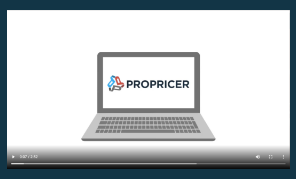There’s the ying and the yang of it: A negotiation always entails mutual sacrifices, but a successful negotiation should also optimize the interests of each party.
To this aim, it helps to categorize a negotiation as competitive or noncompetitive. In competitive negotiation, you as an Agency are in a position to review multiple offers and negotiate the best choice, typically based on price or value. You’re more limited in a non-competitive negotiation, where you’re bargaining with one supplier. (1)
No matter the scenario, a few simple techniques can enhance your position and streamline the process. Use the approaches outlined below to save time, money, frustration, and improve the outcome of a negotiation.
1. Tailor your negotiating team to the situation
Your negotiating team should be focused and highly effective at communicating. Larger teams often struggle to maintain control during negotiations and communication in larger groups can easily become muddled—taking up more time and resources. Try to include only essential people.
For smaller, less complex contracts, the Contracting Officer or Specialist may be the only Agency representative needed.
2. Identify the Contractor’s probable approach to the negotiation
It’s one thing to identify your objectives for the negotiation. It’s another thing to understand the Contractor’s goals. Even better if you can put yourself in their shoes and visualize the approach they will take.
Look to the proposal for insight into the Contractor’s pricing strategy. Extensive details on pricing typically indicate less wiggle room than in more generalized proposals. Past price negotiation memorandum (PNMs), as well as insight from your associates who’ve had previous dealings with the Contractor, are other valuable sources of information.
As you do your research, reflect on the Contractor’s stated and understated priorities and consider how they will influence the negotiation. Even though contracts are first and foremost a source of revenue, there may be other business objectives involved. Contractors might be aiming to secure greater market share, entry into a new field, cash flow improvement, or continued government business.
Finally, notice the constraints the contractor is facing and how these will affect the negotiation. Doing so will help you understand which areas are more flexible than others.
3. Assess the Contractor's bargaining strengths and weaknesses
Each party in a negotiation brings different powers and vulnerabilities to the table. Occasionally, you as an Agency may have bargaining power because you’re the only government customer for a particular product. On the other hand, a Contractor may be the sole supplier or possess greater knowledge of the market.
Time constraints, viable alternatives, and the relative importance of the contract can also give one party an advantage over another. In either case, bargaining power doesn’t have to be real—even a perceived advantage can affect a negotiation’s outcome.
4. Aim high but give yourself room to compromise
The higher your expectations for the negotiation, the better your team will ultimately perform. Expectations influence behavior—and behavior influences the end result.
Nevertheless, be prepared to make concessions. Setting your opening position too close to your ultimate objective will leave you with less room for flexibility. You want your initial offer to be close to your end goal, but still far away enough that you’re able to make compromises.
5. Make concessions wisely
Compromise is generally expected during a negotiation. If you open too low, you'll be seen as rigid and unyielding. This could frustrate the other party and hinder a successful outcome. Instead, develop a variety of positions to make your Agency appear fair and reasonable.
Always begin at a lower initial offer—without squeezing your lowest point—and negotiate up. As expected, Contractors usually start high and are willing to come down during the process. (1)
6. Use the power of patience
Throughout a negotiation, time is the enemy but patience is your weapon. Hastiness can result in mistakes and an unfavorable outcome. On the other hand, patience softens expectations, encourages flexibility, and gives the other party time to accept tough choices.
Establishing deadlines for the other party also helps force concessions. But make sure to challenge any deadlines the other side tries to impose on you. If possible, call for a break if you feel the process is moving too fast. (2)
7. Be willing to walk
It’s important to set your objective ahead of the negotiation, but it’s also critical to establish your walk-away point or the very minimum you are willing to accept. Do this by considering viable alternatives and establishing the outside parameters of your objectives ahead of time.
This way, you’ll enter the negotiation with a deeper understanding of what you need for a successful outcome. By being willing to walk away, you’ll inevitably put pressure on the other party, thus giving you an advantage.
8. Use win/win tactics but also put pressure on the Contractor
Ideally, you want to keep your stress low while simultaneously increasing pressure on the other side. You can do this by focusing less on your own limitations and concentrating more on the Contractor’s restraints.
Identify specific pressures the other party may be facing. Simply believing that there are unknown pressures facing the other side will also help your case. As you communicate throughout the negotiation, listen and watch for cues that signal stress points.
Remember to not let artificial pressures, such as impressive credentials or prestigious-sounding job titles add tension to your approach. (1)
Expedite the negotiation process with ProPricer
A successful negotiation outcome is more than just securing a contract at a good price—it’s about obtaining a high-value solution for both parties. This leads to quality performance, timely delivery, and a mutually beneficial long-term relationship. While you should aim to secure a fair price, you should also focus on building a strong rapport with the other party.
For an easier, more efficient way to manage proposals, change orders, and revisions, consider ProPricer - a government contract pricing platform that simplifies proposal pricing development accuracy, submission, evaluation, negotiation, and audits. With ProPricer Government Edition and ProPricer Contractor Edition, both parties can use the same software system to expedite the negotiation process.
Request a live ProPricer Government Edition demo here.
Sources:
- Defense Acquisition University: Negotiation Techniques Tools Catalog
- Watershed Associates: Time and Patience in Negotiations





